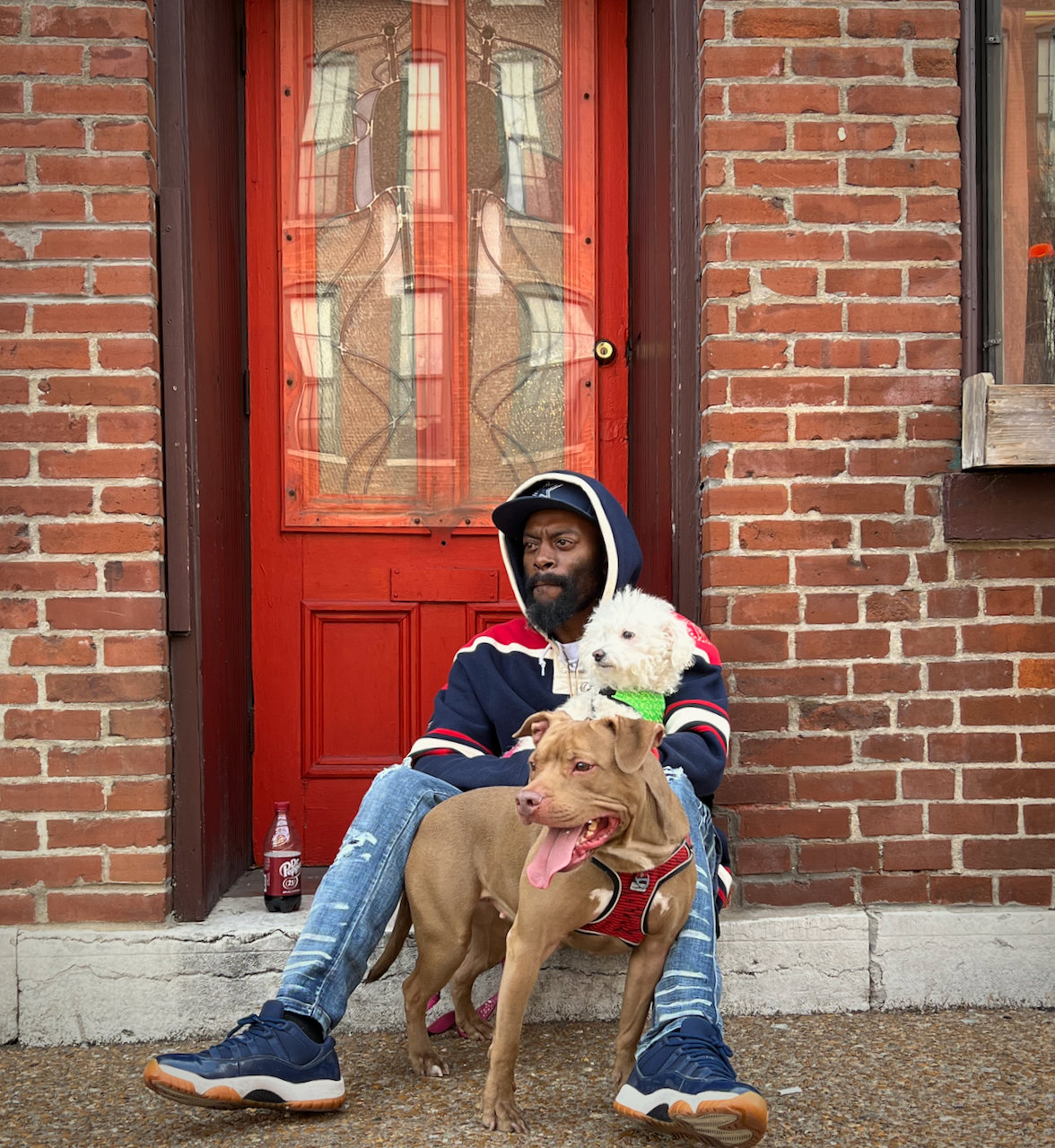
Frank, sitting outside McGurk’s Irish Pub and Garden in Soulard, says he has been coming to the pet parade for years and is proud of St. Louis’ reputation for the country’s second-largest Mardi Gras. (Photo by John Griswold)
I think of French influence in St. Louis the way I think of the Romans’ influence in Britain: Other than naming, most of that culture has disappeared. St. Louis certainly “brands” with the ubiquitous fleurs-de-lis, and the landmark statue of Louis IX, sculpted by a German-American artist, at the top of Art Hill is a 1904 nod to when the city was named in 1764. The “French architecture” of the city is largely Second Empire construction from the later nineteenth century, when there was an international craze to use it to signal faddish high culture.
St. Louis today was shaped instead by its riverine utility, its strategic location for westward expansion, the Great Migration, and by waves of Italian, German, Irish, Mexican, and Chinese immigration. Much more than “French” identity, the city has an almost steampunkish feel resulting from contemporary America sitting atop rapid Victorian industrialization, which built quickly after a colonial fur-trade start. French ownership (which was more often Spanish-administered in the city’s early years) did not last long and was finished in 1803.
That is why I was surprised to discover, having moved north from French-Catholic Louisiana, where I experienced three distinct types of Mardi Gras celebrations, that St. Louis residents liked to say they had the second-largest Mardi Gras celebration in the country after New Orleans, as if it was inevitable, based on historical ethnicity. In fact, the president of the St. Louis Mardi Gras Foundation “said celebrating Mardi Gras in St. Louis did not start because of the city’s French heritage, but rather five friends who wanted something to do after a snowstorm in February 1980.”
And though the Mardi Gras celebration in the Soulard neighborhood is big and enjoyable, with the usual beads, parade floats, costumes, and booze, it comes in well behind the size of other cities’ celebrations, including those in Mobile, Alabama, the first capital of French Louisiana.

(Photo by John Griswold)
I was surprised again Sunday on my first visit to Soulard’s pet parade that it too is Mardi-Gras themed. Sponsored by Purina, it was an enjoyable short afternoon of thrown beads, booze, all manner of dogs, the people who love them, and those who like to watch them (dogs and people) sniff and bark at each other. There was a shocking rarity of cats, rats, and cockatoos.
The weather was sunny and warming. Best-dressed pets would become members of the Court of the Mystical Krewe of Barkus. A Coronation Pageant would crown the King and Queen of Barkus. Proceeds went to an animal sanctuary.
The pet parade is, it seems, “the world’s largest costumed pet parade.” St. Louis wins!
